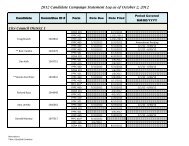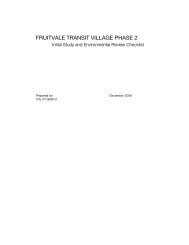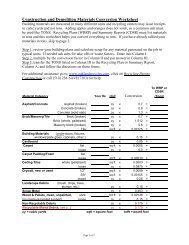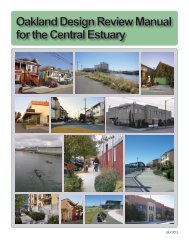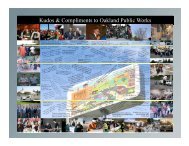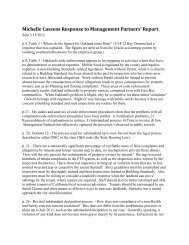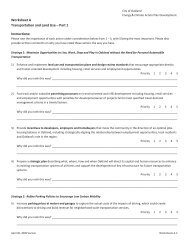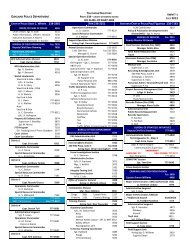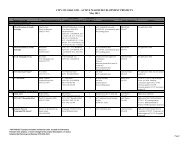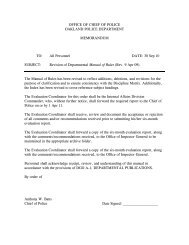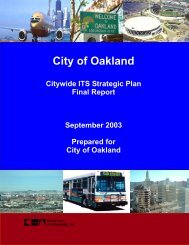Architectural Salvage Assessment, Contributing ... - City of Oakland
Architectural Salvage Assessment, Contributing ... - City of Oakland
Architectural Salvage Assessment, Contributing ... - City of Oakland
You also want an ePaper? Increase the reach of your titles
YUMPU automatically turns print PDFs into web optimized ePapers that Google loves.
1. INTRODUCTION<br />
1.1 Statement <strong>of</strong> Purpose<br />
This report assesses the architectural features and building components <strong>of</strong> the eighteen (18)<br />
contributing buildings within the <strong>Oakland</strong> Army Base (OARB) Historic District. Compiled<br />
for the Port <strong>of</strong> <strong>Oakland</strong> Environmental Planning and Permitting Department and the <strong>City</strong> <strong>of</strong><br />
<strong>Oakland</strong> Community & Economic Development Agency, the report is intended to serve as a<br />
guide for salvage operations undertaken by the Port and the <strong>City</strong> pursuant to the demolition<br />
and/or deconstruction <strong>of</strong> district contributors within their respective jurisdictions.<br />
Overviews <strong>of</strong> the base’s historical development and architectural characteristics provide a<br />
contextual backdrop for the building entries that follow. Recommendations for salvage are<br />
summarized in a chart accompanying the “Summary <strong>of</strong> Findings” subsection <strong>of</strong> the<br />
Introduction, and recapitulated in the Conclusion. The principal sections <strong>of</strong> the report—<br />
Historical Overview; <strong>Architectural</strong> Characteristics; and Documentation and <strong>Salvage</strong><br />
<strong>Assessment</strong>—are illustrated with archival and contemporary photographic images grouped<br />
at the end <strong>of</strong> each section.<br />
The report should be seen within the specific context <strong>of</strong> cultural resource management and<br />
mitigation—that is, as an assessment <strong>of</strong> salvage/reuse potential from the perspective <strong>of</strong><br />
historical and architectural significance—rather than as a comprehensive statement about the<br />
salvage/reuse process. The findings and recommendations in this report will feed into the<br />
overall salvage and deconstruction efforts at the former <strong>Oakland</strong> Army Base.<br />
The Port and <strong>City</strong> adhere to a broad‐based salvage/reuse process derived from policy<br />
commitments to sustainable, “green” principles, and this study represents only one facet <strong>of</strong><br />
that process. Within the broader context <strong>of</strong> sustainability, salvage operations will likely<br />
include building components and materials other than those recommended in this report.<br />
Although it is unlikely that historic buildings can be reused within the Port development<br />
area, it is conceivable that one or more buildings may be retained in whole or in part for<br />
adaptive reuse within the <strong>City</strong>’s Gateway development area. Should reuse <strong>of</strong> a building<br />
within the historic district occur, care should be taken not to remove its historic features for<br />
salvage.<br />
Several real‐world parameters may constrain the salvage recommendations in this report.<br />
These issues, which do not fall within the scope <strong>of</strong> the report, include the technical feasibility<br />
<strong>of</strong> recommended salvage; the economic feasibility and marketing potential <strong>of</strong> recommended<br />
salvage; and any hazardous‐materials remediation that may be associated with the salvage <strong>of</strong><br />
specific architectural features and building components. The responsible agencies must<br />
assess these constraints on a case‐by‐case basis to determine the degree to which the<br />
recommendations in this report will be followed.<br />
1




